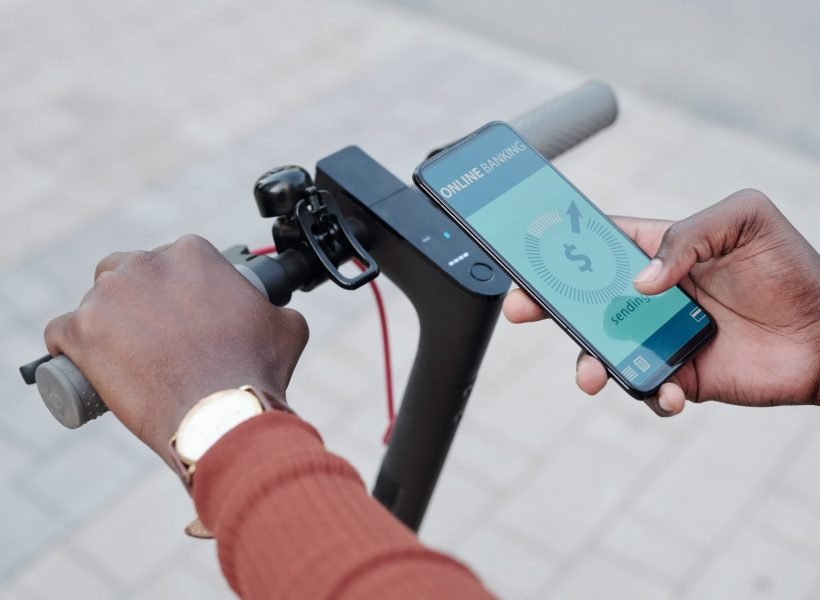8 Reasons To Rent A Scooter While You Traveling
Driving Urban Innovation: How Tech is Transforming Mobility

Urban centers around the world are experiencing rapid technological advancements that are reshaping the way people move within cities. From smart transportation systems to on-demand mobility services, technology is driving urban innovation and revolutionizing the concept of mobility. In this blog post, we will delve into the transformative impact of technology on urban mobility and explore how these innovations are shaping the future of transportation.
1. Smart Transportation Systems
One of the key ways technology is transforming mobility in urban areas is through the implementation of smart transportation systems. These systems leverage data analytics, artificial intelligence, and IoT (Internet of Things) technologies to optimize traffic flow, reduce congestion, and enhance overall transportation efficiency. From intelligent traffic lights that adjust signaling based on traffic patterns to dynamic routing systems that provide real-time traffic updates, smart transportation systems are revolutionizing the way people navigate cities.
2. Ride-Sharing and Carpooling Platforms
The rise of ride-sharing and carpooling platforms, powered by smartphone apps, has transformed the way people commute and travel within urban areas. Services like Uber, Lyft, and BlaBlaCar have made it easier for individuals to share rides, reduce the number of vehicles on the road, and lower carbon emissions. These platforms promote a more sustainable and cost-effective approach to urban mobility while providing convenient transportation options for city dwellers.
3. Electric and Autonomous Vehicles
The proliferation of electric vehicles (EVs) and autonomous vehicles (AVs) is revolutionizing urban transportation by offering cleaner and more efficient modes of travel. EVs reduce emissions and lessen the environmental impact of transportation, while AVs promise to improve safety, reduce traffic congestion, and enhance mobility for all residents. The integration of these technologies into urban mobility systems is driving innovation and paving the way for a more sustainable and connected future.
4. Micro-Mobility Solutions
Micro-mobility solutions, such as electric scooters, bicycles, and shared mobility services, are gaining popularity in urban areas as convenient and eco-friendly alternatives to traditional modes of transportation. These compact and agile options provide a flexible and efficient way for people to travel short distances, alleviate congestion, and reduce reliance on personal vehicles. Technology-enabled micro-mobility solutions are contributing to the diversification of urban transportation options and promoting sustainable mobility practices.
5. Data-Driven Mobility Planning
Advancements in big data analytics and mobility tracking technologies are enabling cities to undertake data-driven mobility planning initiatives. By analyzing transportation patterns, usage data, and demographic information, urban planners can optimize infrastructure development, improve public transportation routes, and enhance urban mobility services. Data-driven insights are empowering cities to make informed decisions that support efficient and sustainable transportation systems.
6. Integration of Multi-Modal Transport Options
Technology is facilitating the integration of multi-modal transport options, allowing travelers to seamlessly switch between different modes of transportation within a single journey. Mobility-as-a-Service (MaaS) platforms, combining public transit, ride-sharing, bike-sharing, and other transportation services, offer a holistic approach to urban mobility, providing users with convenient and efficient travel solutions. The integration of multi-modal transport options enhances accessibility, connectivity, and overall mobility convenience for urban residents.
7. Enhanced User Experience and Accessibility
Technological innovations are enhancing the user experience and accessibility of urban mobility services. Mobile apps and digital platforms offer real-time trip planning, payment convenience, and personalized travel recommendations, making it easier for users to navigate cities and access transportation services. By prioritizing user-centric design and intuitive interfaces, technology is improving the overall accessibility and usability of urban mobility solutions for residents and visitors alike.
In conclusion, technology is playing a transformative role in shaping the future of urban mobility by driving innovation, promoting sustainability, and enhancing the overall transportation experience in cities. From smart transportation systems and ride-sharing platforms to electric vehicles and integrated multi-modal solutions, tech-driven advancements are revolutionizing the way people move within urban areas. As cities continue to embrace digitalization and technological advancements, the future of urban mobility holds promise for a more connected, efficient, and sustainable transportation ecosystem. The convergence of technology and mobility is driving urban innovation and paving the way for smarter, greener, and more accessible cities of tomorrow.
Need Assistance? Contact Us!
Whether you have questions about our services, need help with the app, or want to learn more about sustainable urban mobility, our team is here to help!
- (+90)533 919 7447
- support@domain.com


